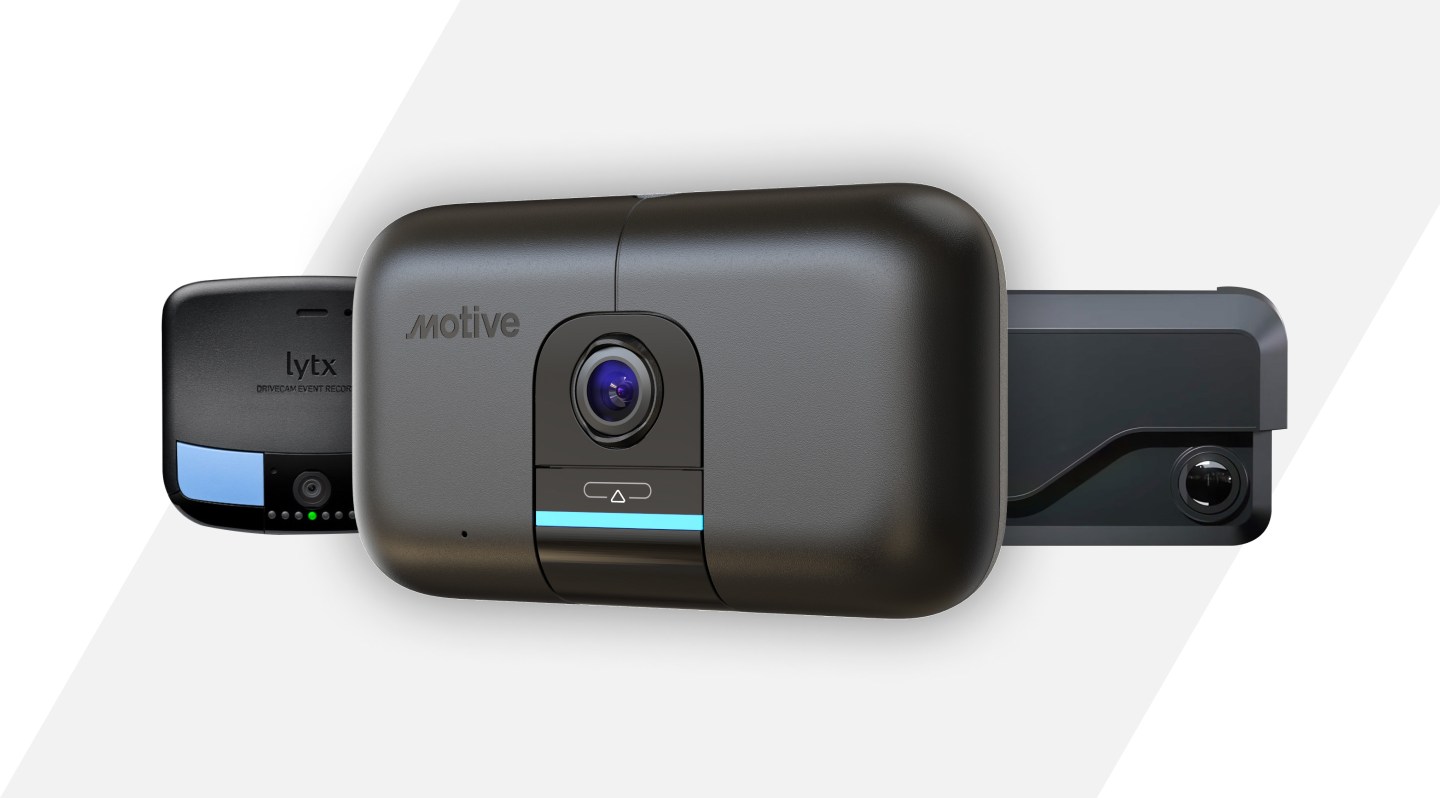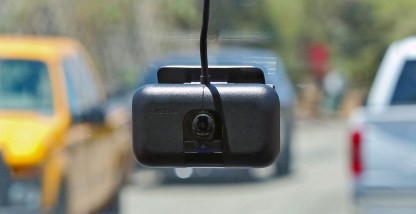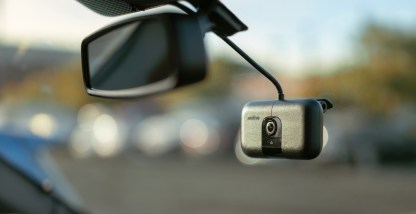Motive successfully alerts drivers 3-4x more than Samsara & Lytx in new study.
Safety management is more than a job; it’s a commitment — to understanding what’s happening on the road, knowing which drivers are in need of attention, having evidence to back up incident investigations, and helping your fleet become safer and more profitable. And that’s just for starters.
It’s a critical job. If drivers hit the road without proper training or become distracted behind the wheel, the consequences can be severe. Costly crashes; lawsuits that can drag on for years; injuries and deaths — lives and livelihoods are on the line. In fact, Federal Motor Carrier Safety Administration (FMCSA) data on fatal accidents that involve large commercial vehicles show financial impacts can be as high as $7 million per incident. Even small settlements can top $400,000.
Here are more startling statistics: According to the National Highway Transportation Safety Administration (NHTSA), five distracted seconds at a speed of 55 mph is the same as driving the entire length of a football field with your eyes shut. NHTSA also found that 94% of the primary contributing factors to crashes were attributed to the driver.
With statistics like these in mind, most fleets prioritize safety, often turning to AI dash cams for help. Unfortunately, products don’t always measure up when you get them into your vehicles. To really work in the field, cameras must be highly reliable, meaning the AI actually needs to detect events in real time. Otherwise, you have an expensive video recording system that creates more problems than it solves.
For safety leaders, it’s critical to sift through the noise to find out what really works before making an investment. Especially when the safety and protection of their team of drivers, the communities on the roads all around them, and the companies they represent are at stake.
That’s why we called on one of the transportation industry’s most respected safety voices, Virginia Tech Transportation Institute (VTTI), to put our solution, and a couple of others, to the test.
As a global authority on transportation systems and strategy, VTTI is continually advancing transportation through innovation. The institute has influenced public policy on driver, passenger, and pedestrian safety. Given their reputation, we asked VTTI to complete a sponsored study measuring the performance of on-road driver monitoring systems from three dash cam vendors: Lytx, Samsara, and Motive.
The test was specifically designed to look at unsafe driving maneuvers like close following, rolling stops, lack of seat belt use, texting, and phone use — the actions that lead to millions of collisions each year.
Study Methodology
VTTI conducted a series of tests to gauge how effectively drivers were alerted to unsafe driving behaviors, including:
| Talking on the phone | Close following |
| Lap texting | Rolling through stop signs |
| Texting at a 45-degree angle | Not wearing a seatbelt |
To ensure fairness, tests were conducted during the day, at night, and at twilight. Camera placement in the cab was rotated to give each camera equal time in each position.
Like any study, this one had assumptions and limitations. For example:
- VTTI’s on-road testing looked at the dash cams’ ability to respond to unsafe behavior through in-cab alerts and dashboard notifications. Testing also assessed time-to-alert from the start of each task.
- The systems were tested in three positions, three times a day, with five replications for each day/night test and three replications for each twilight test.
- Some controlled factors may impact system performance, including:
- Weather conditions. The trials were conducted in generally clear conditions.
- The driver. All trials included the same commercial driver, a trained VTTI researcher.
- Variations in technology. The Lytx system wasn’t evaluated for Rolling Stop alerts, because the Rolling Stop alert was deactivated for their customer base during the study.
See what really happened: Faster, more frequent in-cab alerts
Throughout the study, “Motive was associated with statistically significant, higher likelihoods to successfully issue an in-cab alert for phone calls, lap texting, 45-degree texting, close following, and rolling stops.”
Across all times of day and camera placements, the Motive AI Dashcam performed well at successfully alerting unsafe driving behaviors. For multiple unsafe driving behaviors, it alerted 3-4x more than the latest models from Samsara and Lytx.
Why does this matter? Because when safety is in jeopardy, time’s not on your side. You need a solution that acts fast to protect drivers and your business.
You can find the full results of this landmark study here, but here’s a preview:

Overall phone call test results: Motive: 95%, Samsara: 38%, Lytx: 28%
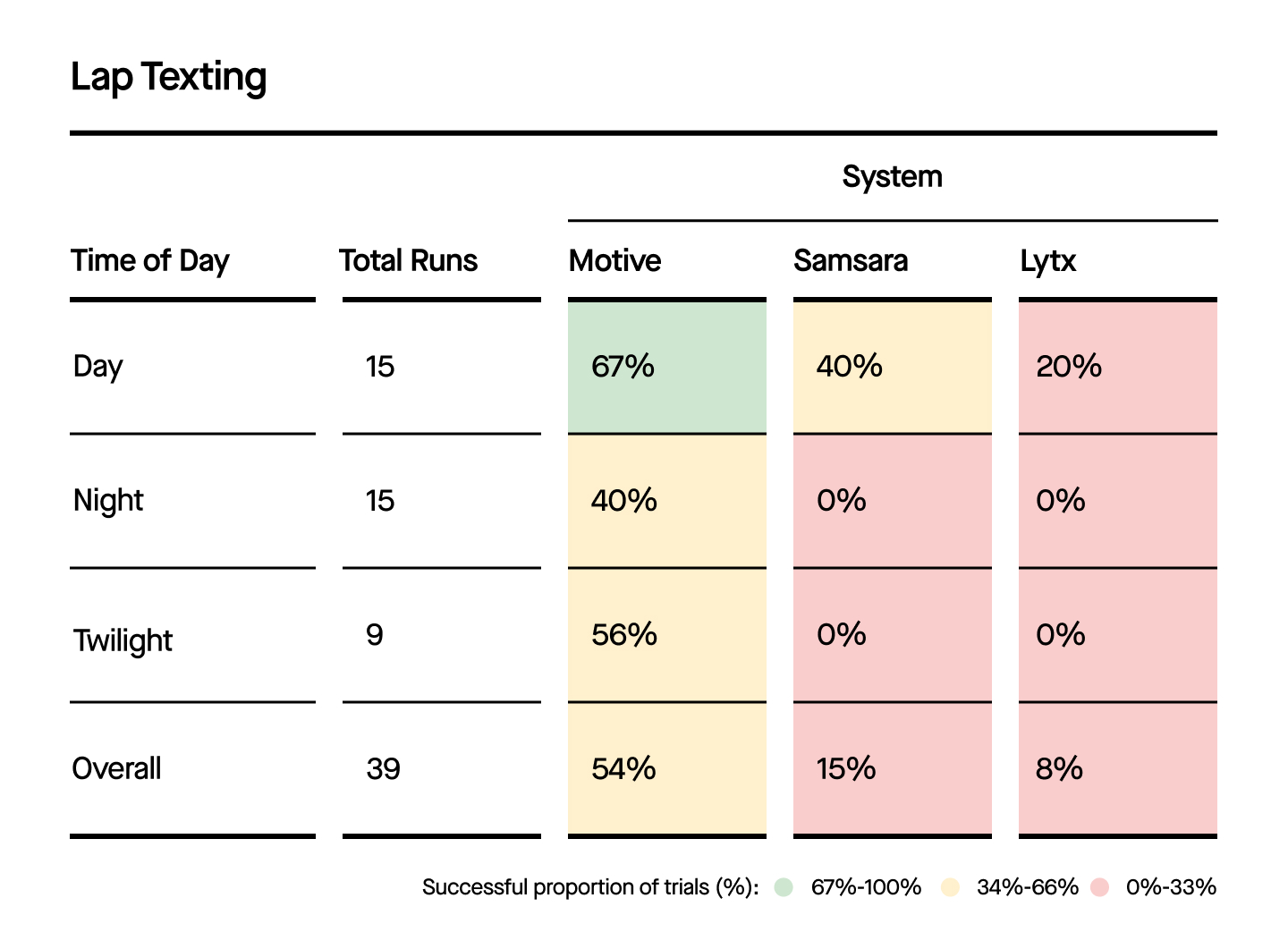
Overall lap texting test results: Motive: 54%, Samsara: 15%, Lytx: 8%
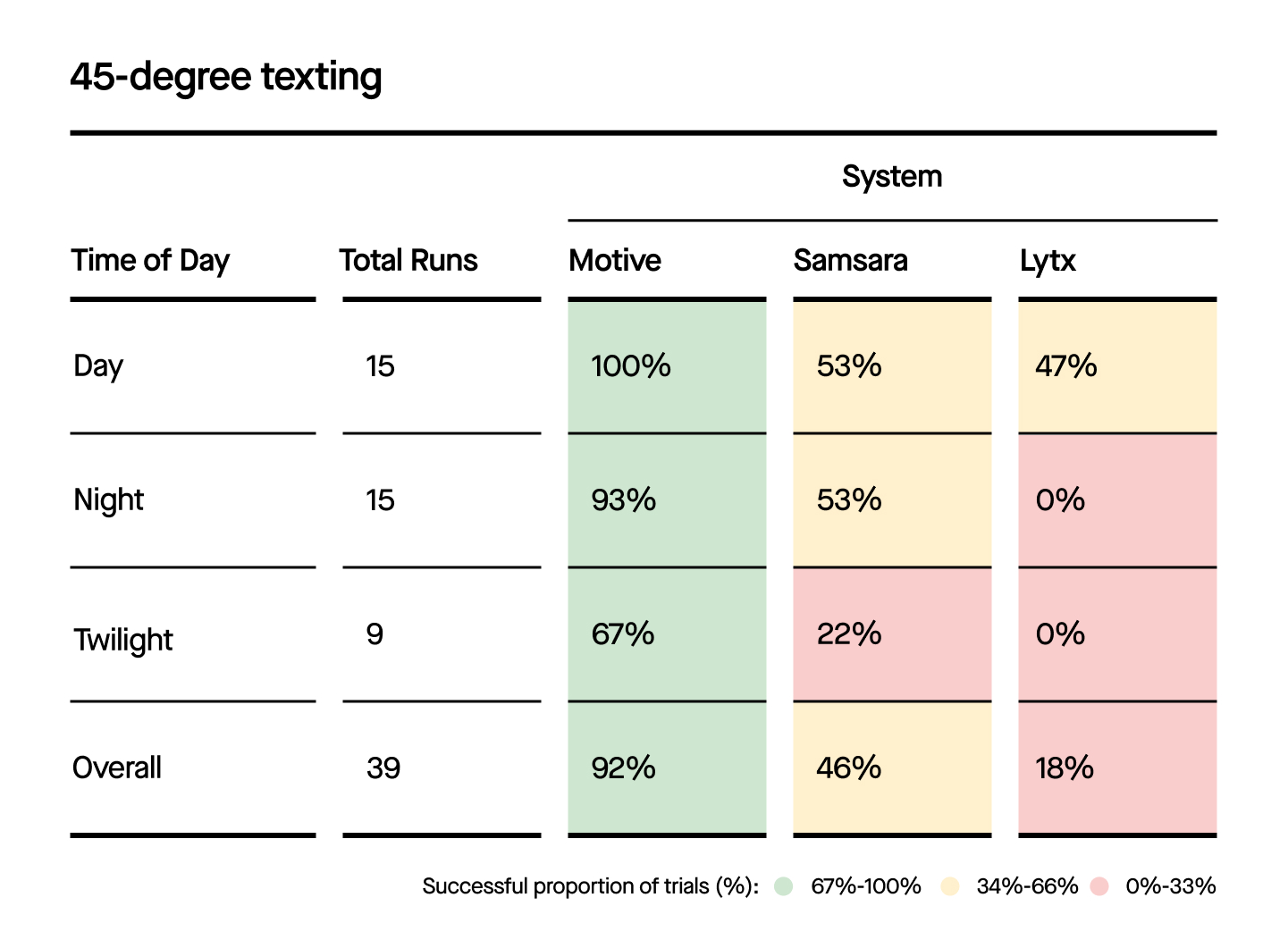
Overall 45-degree texting test results: Motive: 92%, Samsara: 46%, Lytx: 18%

Overall close-following test results: Motive: 67%, Samsara: 18%, Lytx: 28%
Motive also successfully alerted the test driver when they rolled through a stop sign more than Samsara. That alert type was not available on the Lytx system.
Ready to see safety in a whole new way?
Benchmarking your fleet’s safety success is easy with the right tools. If you’d like to do a test like the one VTTI conducted, get in touch. We’ll share the whole methodology with you. You’ll have a crystal clear view of the power of accurate AI vision, and understand how it can bring your fleet closer to zero harm.
When safety is at stake, you can’t afford to settle for second best. Protect your drivers and your fleet with the fastest, most accurate AI. Motive will help reduce crashes, enhance driver retention, and increase profitability. Fleets of any size, in any industry, will benefit from ongoing safety improvements and a strong safety culture. Request a demo today to see how the Motive AI Dashcam can improve safety and cut costs.




